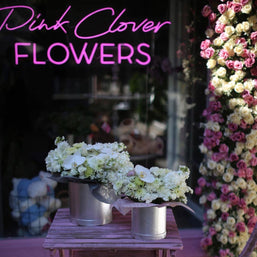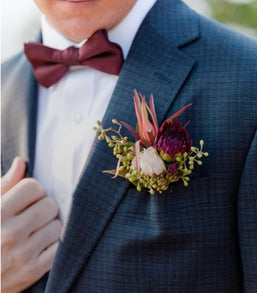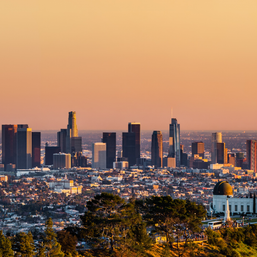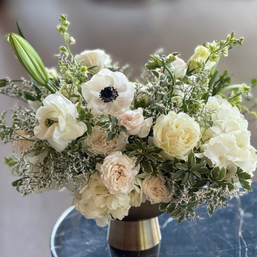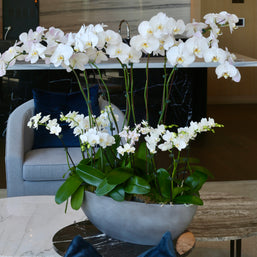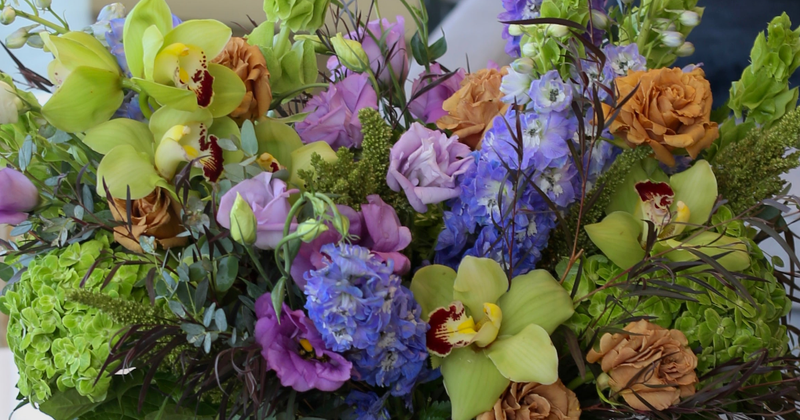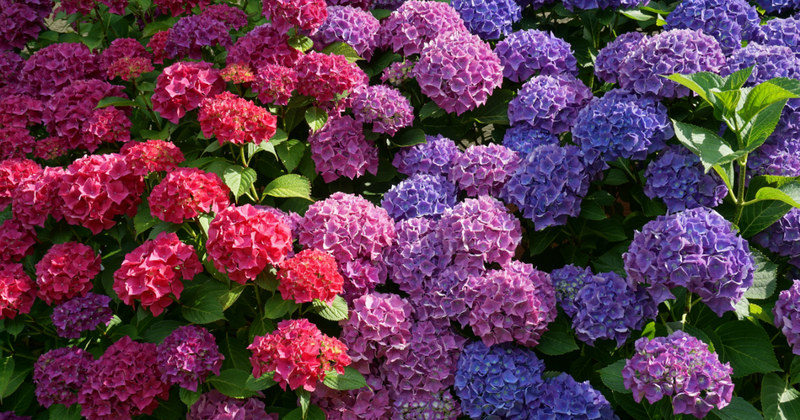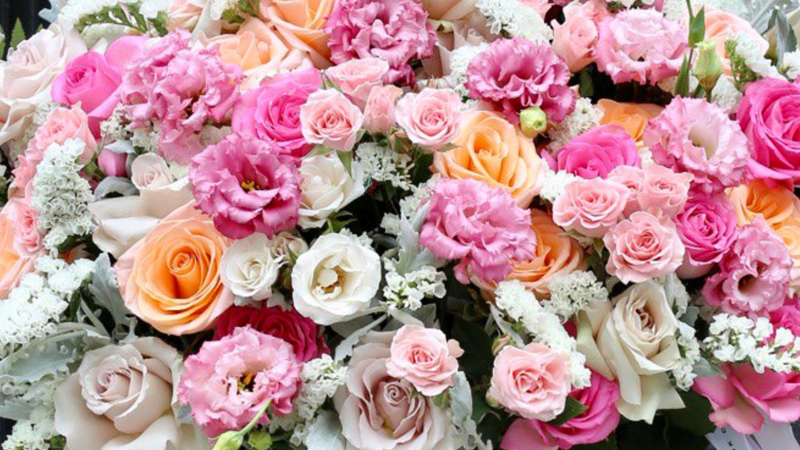Flowers brighten our world with color, fragrance, and symbolism. From tiny wild blossoms to the grandest garden roses, the sheer variety can feel endless. So, how many types of flowers are there? Botanists estimate more than 400,000 flowering plant species worldwide, each with unique traits, colors, and cultural meanings.
For floral lovers, it helps to group flowers by their life cycle. The three main categories are annual flowers, perennial flowers, and biennial flowers. Knowing these groups makes it easier to plan a garden, choose bouquets, or simply learn the different types of flowers and their names.
What Are the Different Types of Flowers?

Flowers can be classified in several ways, but one of the most practical methods is by how long they live and bloom. Understanding these categories helps gardeners, florists, and anyone who loves flowers plan gardens, arrange bouquets, or simply appreciate nature’s variety.
Annual flowers grow from seed, bloom, produce seeds of their own, and then die—all within a single growing season. Because they complete their entire life cycle in just a few months, annuals usually provide an intense burst of color and continuous blooms until the first frost.
Perennial flowers behave differently. Once planted, they return year after year, often going through a natural dormant phase during the colder months before producing fresh growth and blooms each new season. With proper care, perennials can keep a garden vibrant for many years.
Biennial flowers follow a two-year schedule. In the first year they focus on developing roots and leafy growth, then in the second year they send up stems and blossoms, set seed, and finish their life cycle.
Recognizing these three main groups—annual, perennial, and biennial—makes it much easier to choose the right plants for your garden or to understand the many kinds of flowers you might see in arrangements and landscapes.
What Are Annual Flowers?
Annual flowers sprout, bloom, produce seeds, and die all within one year. Because they put all their energy into a single season, they often produce bright, long-lasting blooms. Gardeners love annual flowers for instant color and variety.
What Are the Most Popular Annual Flower Species?
Here’s a list of flower names for beloved annuals:
 Snapdragon
Snapdragon
Snapdragons are instantly recognizable for their tall, spiky stems packed with rows of uniquely shaped blossoms that resemble the face of a tiny dragon—hence their playful name. These flowers bloom in a spectacular range of colors, including brilliant reds, sunny yellows, deep purples, soft pastels, and even striking bi-color combinations. Gardeners love them for their long flowering season and their ability to create vertical drama in borders, cottage gardens, and container plantings.
 Sunflower
Sunflower
Sunflowers are among the most recognizable blooms in the world, celebrated for their bold size and radiant golden petals that surround a rich, dark center. Their impressive heads can grow as wide as a dinner plate, and many varieties reach heights of six feet or more, making them natural focal points in gardens and fields. The name comes from their remarkable habit of heliotropism - young sunflowers literally turn their faces to follow the sun across the sky from east to west each day, a graceful movement that captures the energy of light and growth.
Zinnia
Zinnias are beloved for their brilliant, almost painterly array of colors—fiery reds, sunny yellows, electric oranges, delicate pinks, pure whites, and even striking bi-color blends. Their daisy-like blooms can be single, semi-double, or fully double, forming lush, layered petals that resemble small dahlias. These hardy flowers flourish in the peak of summer heat and sunlight, thriving where many other blooms might fade, which makes them a favorite for low-maintenance gardens, borders, and cheerful cut-flower arrangements.
Symbolically, zinnias represent friendship, endurance, and lasting affection. Their ability to keep blooming from midsummer until the first frost speaks to steadfast love and remembrance, making them a perfect choice for gifts that celebrate enduring connections.
 Marigold
Marigold
Marigolds glow with rich hues of gold, orange, and deep red, their ruffled petals forming dense, sunlike blooms that brighten gardens and arrangements alike. Hardy and sun-loving, they thrive in warm weather and are easy to grow from seed, making them a favorite for borders, containers, and pollinator gardens. In many cultures, marigolds hold deep symbolic meaning: they represent passion, creativity, and the warmth of the sun, and are used in celebrations from Mexico’s Día de los Muertos to Indian festivals like Diwali. Their vibrant color and long-lasting nature also make them a symbol of endurance and the eternal cycle of life.
 Aster
Aster
Asters resemble small, star-shaped daisies with slender petals radiating from a cheerful yellow center. They bloom in late summer and early fall, filling gardens with shades of purple, pink, blue, and white just as many other flowers begin to fade. Asters symbolize love, patience, and elegance, offering a gentle reminder of the beauty found in late-season gardens. Their ability to attract butterflies and pollinators adds life and movement to landscapes, while their long stems and delicate form make them excellent cut flowers for soft, romantic bouquets.
 Cosmos
Cosmos
Cosmos charm with their light, feathery foliage and wide, airy petals that flutter in the breeze like soft, colorful butterflies. Available in shades of white, pink, red, and deep magenta, they add effortless grace to flower beds and wildflower meadows. Their easygoing nature and ability to thrive in poor soil have made them a symbol of peace, harmony, and balance, reflecting a sense of calm simplicity. Gardeners love cosmos for their long blooming season and their knack for self-seeding, ensuring a return of beauty year after year.
Celosia
Also known as cockscomb, celosia is instantly eye-catching for its unusual, flame-like blooms and velvety texture. Available in vivid reds, oranges, yellows, and even neon pinks, these flowers look like vibrant plumes of fire or intricate coral. Their striking shapes add height and bold color to garden beds and bouquets. Celosia symbolizes boldness, affection, and immortality, making it a perfect choice when you want to convey lasting love or create a centerpiece with dramatic flair.
 Amaranthus
Amaranthus
Amaranthus is known for its luxurious, cascading ropes of flowers that drape elegantly from tall stems. Available in deep burgundy, bright green, or bronze tones, these dramatic blooms add instant texture and movement to arrangements and large installations. Historically valued as both an ornamental and a grain crop, amaranthus represents immortality and abundance, a nod to its ability to thrive and reseed generously. Florists often use it in modern arrangements for a striking, sculptural effect.
 Scabiosa
Scabiosa
Often called the pincushion flower, scabiosa features delicate, domed blooms with a charming central “pin” surrounded by soft, ruffled petals. Found in shades of lavender, blue, white, and rich burgundy, they bring subtle elegance and a touch of whimsy to gardens and bouquets. Scabiosa symbolizes love that endures and pure affection, making it a romantic choice for wedding arrangements or anniversary gifts. Their long stems and continuous summer blooms also attract butterflies, adding lively movement to any garden.
 Nigella
Nigella
Also known as love-in-a-mist, nigella stands out for its finely cut, lacy foliage that forms a soft mist around star-shaped blue, white, or violet flowers. After blooming, it develops decorative seed pods that are prized for dried arrangements. With its delicate beauty and ethereal texture, nigella symbolizes dreamlike charm and gentle protection. Gardeners appreciate its ability to self-seed and naturalize, creating a fairytale effect in borders and cottage gardens year after year.
What Are Perennial Flowers?
Perennial flowers return year after year, making them a long-term investment for gardens and a reliable source for bouquets. They usually bloom for a set period each year, then rest until the next season.
What Are the Most Popular Perennial Flower Species?
 Rose
Rose
The rose is the world’s classic symbol of love and beauty, admired for its velvety petals and unmistakable fragrance. From delicate spray roses to large garden varieties, roses appear in nearly every color, each carrying its own meaning—red for passion, pink for admiration, yellow for friendship, and white for purity. They bloom on sturdy, thorned stems and can be trained as shrubs, climbers, or compact patio plants. Roses are timeless in weddings, anniversaries, and everyday bouquets, where their layered petals create a luxurious, romantic focal point.
 Tulip
Tulip
Tulips embody the joy of spring with their sleek, cup-shaped blooms and vibrant spectrum of colors, from bold primaries to soft pastels and dramatic bi-tones. Originating in Central Asia and famously cultivated in the Netherlands, tulips symbolize perfect love and renewal. Their clean lines and elegant stems make them favorites for Easter celebrations, early-season weddings, and cheerful home arrangements. With proper care, they continue to grow slightly after cutting, adding graceful movement to vases.
 Lily
Lily
Elegant lilies come in many varieties and colors, symbolizing purity and renewal.
 Chrysanthemum
Chrysanthemum
Known as “mums,” chrysanthemums offer a dazzling variety of shapes and colors—single daisy-like forms, fluffy pompons, and spidery petals in shades of gold, burgundy, lavender, and white. They bloom in late summer and fall, bringing rich color when many other flowers fade. In Asia, chrysanthemums are associated with longevity and happiness, while in Europe they often symbolize loyalty and remembrance. Their sturdy stems and long vase life make them a go-to for autumn bouquets and festive arrangements.
 Peony
Peony
Peonies are celebrated for their lush, rounded blossoms and intoxicating fragrance. Their petals, layered like delicate silk, unfold in shades of blush, coral, crimson, and pure white. Blooming in late spring to early summer, peonies symbolize prosperity, romance, and a happy marriage, making them a coveted choice for wedding bouquets and luxury arrangements. A single peony stem can fill a vase with elegance, while a mass of them creates an unforgettable centerpiece.
 Iris
Iris
The iris, named for the Greek goddess of the rainbow, dazzles with its sculptural blooms and intricate patterns. Sword-like leaves frame flowers in purple, blue, yellow, white, and even near-black tones, often with striking “falls” and “standards” that look hand-painted. Irises represent faith, wisdom, and hope, and their regal appearance adds drama to spring gardens and floral designs. Their elegant stems and unique petal structure make them stand out in minimalist arrangements or mixed spring bouquets.
 Dahlia
Dahlia
Dahlias offer breathtaking variety, with blooms ranging from petite pompons to massive dinner-plate sizes, all in a kaleidoscope of colors and petal forms. They flower from midsummer through the first frost, providing continuous color when other plants slow down. Dahlias symbolize creativity, dignity, and inner strength. Their bold shapes and vibrant hues make them a favorite for late-summer weddings, statement centerpieces, and lush garden displays.
 Alstroemeria
Alstroemeria
Often called the Peruvian lily, alstroemeria features clusters of trumpet-shaped blooms marked with delicate streaks or speckles. Available in shades of pink, orange, purple, yellow, and white, these long-lasting flowers symbolize friendship, devotion, and mutual support. Their flexible stems and extended vase life make them a staple in mixed arrangements, where they add texture and bright pops of color that stay fresh for up to two weeks.
 Carnation
Carnation
Carnations are prized for their frilled petals and spicy clove-like scent. They come in nearly every color, including striking variegated varieties, and each hue carries its own message: red for deep love, pink for gratitude, white for purity, and striped petals for playful admiration. Known for exceptional durability, carnations are ideal for corsages, boutonnieres, and arrangements that need to last. Their affordability and long vase life keep them a beloved classic for celebrations of all kinds.
 Hydrangea
Hydrangea
Hydrangeas enchant with their large, cloud-like clusters of flowers in shades of blue, pink, purple, white, and even lime green. Their color can shift depending on soil acidity, creating captivating garden displays. Hydrangeas symbolize heartfelt emotions, gratitude, and understanding, and their abundant blooms bring a lush, romantic feel to wedding décor and elegant home arrangements. Whether displayed as a single dramatic stem or in a full arrangement, hydrangeas create an instant sense of luxury and charm.
What Are Biennial Flowers?
Biennial flowers take two growing seasons to complete their life cycle. The first year is for roots and leaves; the second brings blooms and seeds. They’re perfect for gardeners who plan ahead for unique blossoms.
What Are the Most Popular Biennial Flower Species?
Sweet William
Sweet William forms dense clusters of fragrant, fringed blooms in rich shades of red, pink, and white, often with contrasting eyes or patterned petals. The flowers have a lightly spicy scent and a cheerful, old-fashioned charm that has long symbolized gallantry and heartfelt affection. Their tidy, mounded shape makes them perfect for borders and cut-flower arrangements.
Foxglove
Foxglove sends up tall, dramatic spires covered with rows of tubular blossoms that can be purple, pink, cream, or even spotted inside with speckles. The flowers look like tiny bells lined along the stem, creating a striking vertical accent in gardens. Foxglove represents creativity, energy, and a touch of mystery, drawing pollinators like hummingbirds and bees.
Canterbury Bells
Canterbury bells, true to their name, produce large, bell-shaped blooms in shades of blue, lavender, pink, and white. The petals have a soft, satiny sheen, and the upright stems create a charming cottage-garden feel. Traditionally, they convey gratitude and appreciation, making them a lovely choice for thank-you bouquets or garden plantings near a porch or walkway.
Forget-Me-Not
These petite blue flowers form airy clouds of color that seem to float above their foliage. Their yellow-eyed centers create a gentle contrast, and the plants often naturalize, spreading softly across shady spots. Forget-me-nots carry the heartfelt message of remembrance and lasting love, and their delicate look hides a surprisingly resilient nature.
Lunaria (Honesty Plant)
Lunaria delights twice: first with clusters of violet or white spring flowers, then with unique, translucent seed pods that dry to a silvery sheen. These “silver dollars” catch the light and add an ethereal touch to dried arrangements. Because of their shimmering seed discs, lunaria symbolizes honesty and clarity.
Iceland Poppy
Iceland poppies offer thin, crinkled petals in brilliant shades of orange, coral, yellow, and white, each surrounding a bright golden center. The blooms appear almost weightless and sway gracefully in the breeze. Known for bringing cheer and symbolizing peace, they add a painterly quality to borders and bouquets alike.
Campanula Medium (Cup and Saucer)
Often called “cup and saucer,” these tall, elegant plants feature layered, bell-like flowers that seem to nest within each other. Shades range from deep blue to soft pink and pristine white. Their intricate form and long-lasting blooms bring an enchanting, storybook look to gardens and floral arrangements.
Wallflower
Wallflowers release a rich, sweet fragrance that carries on evening air, making them a favorite for patios and doorways. Their velvety petals come in warm tones of gold, orange, burgundy, and plum, and they symbolize steadfastness and faithfulness. The dense spikes of flowers provide a splash of late-spring color when many other plants are fading.
Stocks
Stocks are beloved for their dense clusters of double or single flowers that exude a sweet, spicy scent. Colors range from pure white and blush pink to deep magenta and violet. Their full, romantic form and nostalgic fragrance make them perfect for cutting gardens and elegant floral designs.
Sweet Rocket (Dame’s Rocket)
Sweet rocket fills the air with a delightful evening perfume, especially at dusk. Its tall stems carry clusters of four-petaled blossoms in shades of lilac, purple, and white that resemble wild phlox. This graceful biennial symbolizes charm and natural beauty while attracting butterflies and night-flying pollinators.
What Are the Most Popular Flowers Across All Types?

Roses
Roses remain the universal symbol of romance and beauty. With velvety petals in every color imaginable—from deep crimson and blush pink to sunny yellow and even near-black—they carry meanings ranging from passionate love to friendship and gratitude. Their layered blooms release a soft, often sweet fragrance, and hybrid varieties mean you can find roses for every season and style, from compact patio plants to sprawling climbers.
Tulips
Tulips bring an instant sense of spring celebration. Their sleek, cup-shaped flowers stand on smooth, upright stems and come in a rainbow of colors, including elegant two-tone varieties and dramatic fringed petals. Originally from Central Asia and beloved in the Netherlands, tulips represent renewal, perfect love, and cheerful optimism. They’re a favorite for Easter arrangements, wedding décor, and simple, joyful home displays.
Lilies
Lilies offer a striking combination of sculptural form and enchanting fragrance. With broad petals that curve back gracefully, they bloom in white, pink, orange, yellow, and spotted or striped varieties. Often used in weddings to symbolize purity and devotion, they also appear in memorial arrangements as a sign of peace and eternal life. Asiatic and Oriental lilies provide long-lasting cut flowers, making them staples in both gardens and elegant bouquets.
Sunflowers
Nothing brightens a space like the sunny face of a sunflower. Their bold, round blooms with golden petals and dark centers follow the sun through the day, symbolizing loyalty and warmth. Ranging from classic towering giants to smaller ornamental varieties, sunflowers bring cheerful energy to summer gardens and rustic or modern floral designs alike. They’re equally at home in a casual kitchen bouquet or a dramatic outdoor wedding arch.
Peonies
Peonies are adored for their lush, full blossoms and luxurious fragrance. Their rounded buds unfurl into layers of silky petals in soft pinks, creamy whites, deep reds, and coral tones. Blooming in late spring to early summer, they represent prosperity, romance, and happy marriage, making them a favorite for wedding bouquets and upscale arrangements. A single stem can fill a vase with elegance and scent, creating a show-stopping centerpiece.
These five beloved flowers—roses, tulips, lilies, sunflowers, and peonies—remain favorites across climates and cultures. Their timeless beauty, wide color palettes, and rich symbolism ensure they continue to appear in gardens, celebrations, and professional flower delivery year after year.
Discover Flower Arrangements and Bouquets at Pink Clover
If you’re inspired to bring these blooms into your life, Pink Clover offers premium flower delivery in Los Angeles. Our expert florists create custom bouquets using different types of flowers, from seasonal peonies to classic roses.
Whether you need a birthday arrangement, wedding bouquet, or same day flower delivery in LA, you’ll find stunning options that highlight the kinds of flowers featured in this guide.
Conclusion
Now you know the answer to “How many types of flowers are there?”—botanists estimate over 400,000 species worldwide. Each one belongs to one of three main life-cycle groups: annuals, which sprout, bloom, and set seed within a single season; perennials, which return year after year with a natural rest period; and biennials, which grow foliage their first year and flower in the second.
Understanding these categories does more than satisfy curiosity. It helps you plan gardens that stay vibrant from spring through winter, select arrangements that fit the occasion, and appreciate the symbolism behind every bloom. Whether you prefer the instant color of annuals, the reliability of perennials, or the dramatic two-year rhythm of biennials, each type adds its own beauty and meaning to your space.
For ongoing inspiration, you can follow Pink Clover on Instagram, where we share daily photos of our freshest designs, behind-the-scenes arranging tips, and seasonal flower highlights. You can also browse our boards on Pinterest for mood boards, color palettes, and bouquet ideas that make it easy to bring the world’s incredible variety of flowers into your own home and celebrations.
FAQs
What is the most common flower?
The rose is often considered the most common and universally loved flower. With countless varieties and colors, it thrives in gardens across the world and carries a timeless association with romance, beauty, and admiration that never fades.
How many types of flowers are there in the world?
Botanists estimate there are more than 400,000 flowering plant species globally. This enormous variety includes everything from tiny alpine wildflowers to large, exotic tropical blooms, offering endless shapes, colors, fragrances, and symbolic meanings for every occasion.
Which common flowers are most often used in bouquets?
Professional florists frequently choose roses, lilies, tulips, hydrangeas, and carnations for their beauty, wide color ranges, and long vase life. These flowers mix well with greenery and seasonal accents, making them staples in both everyday arrangements and luxury floral designs.
Why are roses considered one of the most popular flowers of all time?
Roses have a rich history in art, literature, and culture, appearing in everything from ancient mythology to modern celebrations. Their velvety petals, diverse colors, and unforgettable fragrance keep them a favorite for expressing love, gratitude, or enduring friendship around the world.
What different types of flowers are best for wedding bouquets?
Classic wedding choices include roses, peonies, hydrangeas, lilies, and ranunculus. These blooms offer elegance, durability, and a wide palette of colors, allowing couples to create romantic, long-lasting arrangements for ceremonies, receptions, and keepsake photographs.
What annual flowers are most popular in floral delivery?
Bright, seasonal favorites such as sunflowers, zinnias, cosmos, and marigolds bring cheerful color and lively texture to summer and autumn arrangements, making them popular for both casual gifts and festive events with a warm, celebratory feel.
Which perennial flowers are best for romantic bouquets?
For enduring romance, florists often recommend roses, peonies, lilies, and tulips. Their reliable blooms, lush petals, and rich symbolism of love and devotion make them ideal for anniversaries, proposals, and other heartfelt occasions that call for something truly special.
